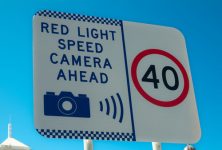Government May Remove Speed Camera ‘Warning’ Signs

A report released on 18 October 2018 by the NSW Auditor-General, Margaret Crawford, has suggested that New South Wales remove signs that alert motorists to upcoming speed cameras, on the basis they reduce road safety.
Ms Crawford says the signs – which give speeding motorists an opportunity to slow down – are counter-productive because drivers tend to program themselves to reduce their speed only when they see the signs, rather than at other times.
This, she claims, is counter-productive to road safety because drivers are more likely to speed at other time as they know they are unlikely to get caught without being forewarned.
More fines equals better road safety, according to Auditor-General
In handing down her report, Ms Crawford used Victoria as an example where concealed and random mobile speed cameras (MSCs) are catching more speeding motorist, which she claims leads to an increase in road safety.
While the report suggests that the best performing mobile speed cameras in NSW have led to reductions in fatal and serious crashes in those areas, there is no specific evidence that they are changing driver behaviour overall, because fewer than 0.1 per cent of drivers who pass the cameras are fined.
The number of infringement notices issued by mobile speed cameras in NSW has fallen by more than 60 percent over the last four years to 21,246 last year, from 55,473 in 2014. This may be partially attributable to the multiple warning drivers receive before approaching the cameras.
Speed-related crashes on the rise
The report suggests that while our state has seen an overall reduction in serious road injuries, the number of fatalities involving speed increased by almost 20 percent in the 12 months to April 2018.
Roads Minister Melinda Pavey has not yet accepted the report’s recommendation to remove warning signs, or its other suggestion that more cameras should be installed.
There are currently 1024 locations approved for mobile speed cameras across the state. But only about 940 of those are actually deemed ‘suitable’ for cameras in so far as they meet the strict criteria for operator safety as well as the technical requirements of the devices.
Driver distraction is also concerning
Speed remains the biggest killer on our roads, accounting for more than 40% of the road toll.
However, drink driving and fatigue are also major killers. Distraction, in particular the use of mobile phones while driving is becoming an increasing concern, with statistics suggesting that texting while driving increases the risk of collision 23-fold, simply because the driver has taken their eyes off the road for too long.
In an effort to tackle the problem, new laws were introduced in 2012 which prohibit drivers from touching a phone (unless it is mounted in an approved carrier), or holding it other than handing it to a passenger, or having a phone on any part of the body (including the lap) while driving.
Camera trial underway
And earlier this year, the NSW government announced a trial of world-first cameras capable it claims are capable of detecting illegal phone use from up to 1 kilometre away.
The hi-tech cameras have already been trialled in Melbourne where they are reported to have detected 272 drivers – or 7.1 per cent of all drivers – illegally using their phones during a five-hour test period across just one lane of the Eastern Freeway.
The cameras, if proven effective, could be a key component’s of the strategy to reduce the road toll by at least 30 per cent by 2021. To facilitate the use of the technology, new laws were introduced into parliament earlier this year.
Those who are caught illegally operating a phone while driving currently face a fine of $319 plus four demerit points. Double demerits apply during major holiday periods.
Going to court for a traffic offence?
If you are going to court for a traffic offence, call or email Sydney Criminal Lawyers anytime to arrange a free first consultation with an experienced, specialist traffic lawyer who will accurately advise you of your options, the best way forward, and fight for the optimal outcome in your specific situation.








